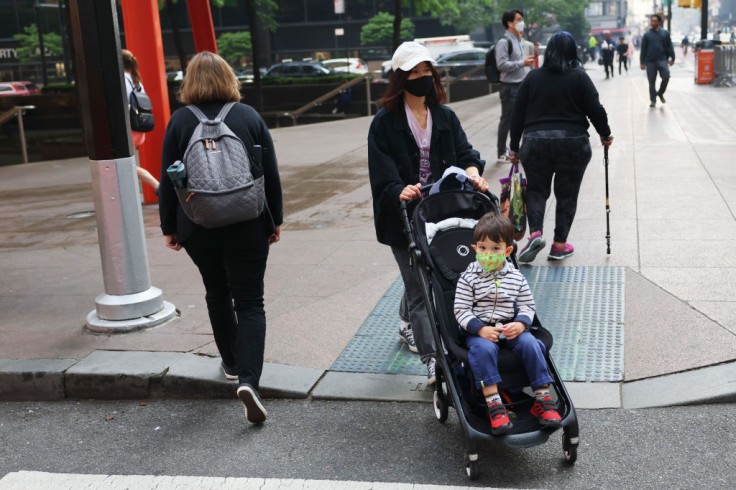
The issue of air pollution is an escalating concern in various regions worldwide, as its adverse effects on human health cannot be understated.
With developing respiratory systems and higher respiratory rates, children are particularly vulnerable to the detrimental impacts of poor air quality.
As responsible guardians, it is imperative for parents to proactively take steps to shield their children from the perils of unhealthy air conditions.
In this article, we will explore effective strategies that can safeguard your children's well-being and foster a healthier living environment.
Here are Ways To Protect Children From Unhealthy Air Quality
Stay Updated with Daily Air Pollution Forecasts in Your Locale
According to the American Lung Association, being aware of the air quality conditions in your vicinity is the first step towards protecting your children from potential harm. Numerous regions provide reports on the Air Quality Index (AQI), which indicate prevailing pollution levels and associated health risks. Many websites and smartphone applications offer real-time updates on air quality, allowing you to plan outdoor activities judiciously. By regularly monitoring the AQI, you can make informed decisions to minimize your children's exposure to harmful air.
Avoid Outdoor Exercise During High Pollution Levels
Physical activity plays a pivotal role in children's overall development and well-being. However, it is advisable to limit outdoor exercise when pollution levels are elevated, particularly in areas where air quality is significantly compromised. High concentrations of pollutants, such as fine particulate matter (PM2.5) and ground-level ozone, can pose respiratory risks and exacerbate existing respiratory conditions. Opting for indoor activities or seeking well-ventilated gyms as alternative exercise spaces can help reduce children's exposure to harmful pollutants.
Prohibit Indoor Smoking
Secondhand smoke is a major contributor to indoor air pollution and poses severe health risks for children. The harmful chemicals present in tobacco smoke can lead to respiratory infections, asthma attacks, and other respiratory complications. To safeguard your children from these dangers, establish a strict no-smoking policy in your home. Educate family members and visitors about the significance of maintaining a smoke-free indoor environment. By creating a smoke-free zone, you can significantly improve the air quality inside your home and protect your children's respiratory health.
Ensure Adequate Medicine Supply
According to Seattle's Child, for children with pre-existing respiratory conditions, such as asthma or allergies, it is crucial to ensure a sufficient supply of necessary medications. Poor air quality can trigger respiratory symptoms and worsen existing conditions, making it essential to have prescribed medications readily available. Consult your child's healthcare provider to devise an action plan for managing respiratory conditions during periods of heightened air pollution. By being prepared, you can promptly address any health issues and minimize the impact of poor air quality on your children's well-being.
Stock Up on Ready-to-Eat Groceries
During times when air pollution levels are alarmingly high, it is advisable to reduce indoor air pollutants generated by cooking. Cooking methods like frying food and using gas stoves can release harmful gases and particles that contribute to poor indoor air quality. To mitigate these risks, consider stocking up on nutritious, ready-to-eat groceries such as fresh fruits, vegetables, and pre-cooked meals. This approach not only helps in maintaining better air quality but also ensures that your children have access to healthy food options, even during periods of compromised air quality.
Encourage the Use of Masks
When air quality is severely affected, the use of masks can provide an additional layer of protection for your children. High-quality masks, such as N95 respirators or masks equipped with high-efficiency particulate air (HEPA) filters, can help filter out harmful pollutants present in the air. It is crucial to choose masks specifically designed for children to ensure a proper fit and adequate protection. However, it is important to note that masks should not replace other preventive measures but should be used in combination with other strategies to minimize exposure to unhealthy air.
Utilize Air Purifiers and Air Conditioning
Investing in air purifiers equipped with HEPA filters can significantly improve indoor air quality and create a healthier living environment for your children. Air purifiers assist in capturing and eliminating pollutants, including fine particulate matter, pollen, dust, and pet dander, thereby reducing potential respiratory risks. Additionally, using air conditioning systems with high-efficiency filters can help filter outdoor air entering your home, further enhancing indoor air quality. Regular maintenance of these devices, including filter replacements, is crucial to ensuring their optimal performance.
Avoid Activities that Aggravate Indoor Air Pollution
Certain daily activities can contribute to indoor air pollution and compromise the air quality inside your home. Activities such as frying food, using a gas stove, lighting candles, vacuuming, or smoking indoors should be avoided or minimized, particularly during periods of poor outdoor air quality. These activities can release harmful pollutants and particles into the air, negatively impacting your children's respiratory health. Opt for alternatives like baking or using electric appliances; choose fragrance-free and non-toxic candles; use vacuum cleaners equipped with HEPA filters; and maintain a smoke-free indoor environment.
Keep Windows and Doors Closed When Indoors
As recommended by ABC, to create a safe haven for your children when outdoor air quality is unfavorable, ensure that all windows and doors are tightly closed. This precautionary measure prevents the entry of outdoor pollutants and helps maintain cleaner indoor air. However, be mindful of proper ventilation to prevent stale air accumulation. When conditions permit, briefly open windows and doors to let in fresh air during periods when outdoor air quality is relatively better.
Safeguarding children from harmful air quality demands a proactive and comprehensive approach.
Prioritizing respiratory health, ensuring an adequate supply of medicines and masks, and adopting cleaner cooking and lifestyle practices can create a safer and healthier living environment for children.
Remember, the steps you take today to protect your children from unhealthy air quality can have long-lasting positive impacts on their well-being and future.
Related Article: Top 5 Best Disney Movies to Watch for Family Night